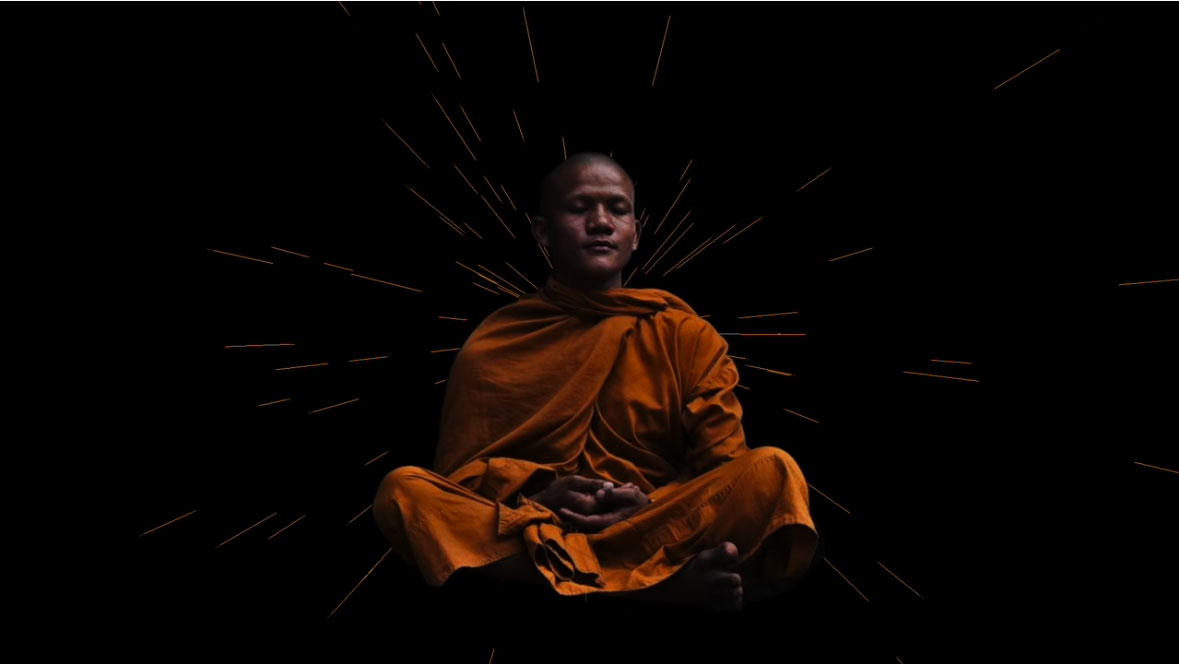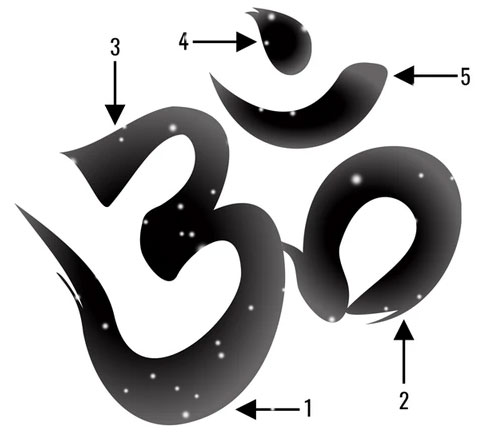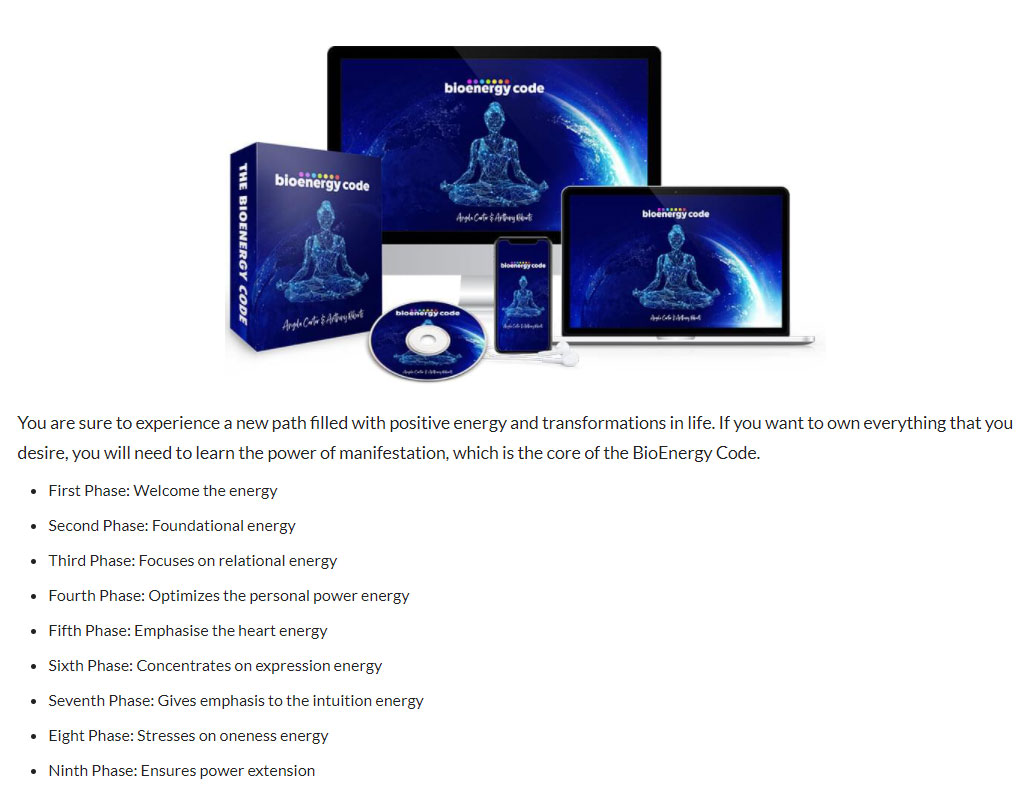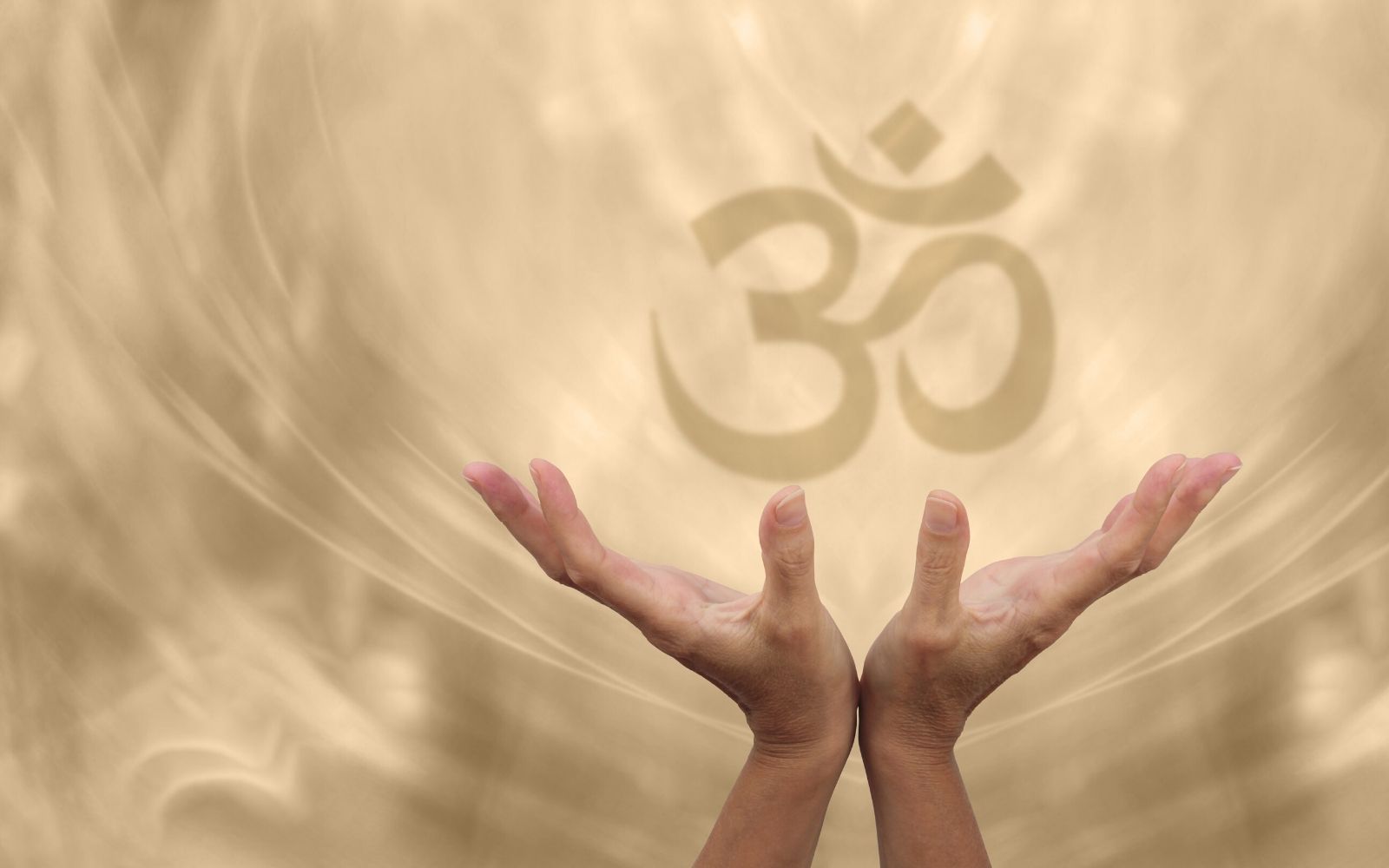Meaning of the buddhist symbol aum
The Symbol Aum (or Om) is a sign from the Hindu religion. It is a typical example of a symbol that we know is important, but we don't know how to recognize its true value. It has a very deep meaning that goes far beyond mere religious belief. According to Buddhist beliefs, Om is a sign that contains within itself all the secrets of the Universe.
It embodies duality: through its sign, we try to explain what cannot be. Om represents the abstract, that which passes through us and surpasses us. It also represents all matter and energies, it is both very tangible and completely evanescent. Om is the All and the Nothing.
Read this article to discover all the secrets and meaning of Aum!
Where does the Om sign come from?
Aum, or Om, is a sacred syllable that comes from Sanskrit, the Indian religious language. Om has a very deep meaning that is not so easy to explain.
Indeed, the syllable is a very strong symbol of the Hindu religion, which is also found in the religions derived from it: Buddhism, Jainism, Sikhism or Brahmanism. Thus, we find the Aum symbol in places where the influence of these religions is strong: mainly in India, Tibet, China, Thailand, Cambodia and even Japan.
The Aum symbol is very widespread: It can be seen in paintings, on jewelry, clothing, and some people wear it as a tattoo. Nevertheless, the Om remains a sacred syllable that contains, according to the followers of the religions that use it, the secret of the Universe.
The other name of Om is pravana mantra, which means "primordial mantra" in Sanskrit. As the first mantra, it represents openness, creation, the pure entity that created the world. It is used as a prefix or suffix to Hindu mantras. For example in the Siddhi Vinayak Mantra for Ganesh :
" Om Namo Siddhi Vinayakaya Sarva kaarya kartrey
Sarva vighna prashamnay Sarvarjaya Vashyakarnaya
Sarvajan Sarvastree Purush Aakarshanaya Shreeng Om Swaha. "
Aum is the original sound, the one that would have structured the Universe. It contains the sum and substance of the Universe. It is said that the Om is the absolute truth, "the whisper of the universe".

The meaning of Aum through its pronunciation
Aum is composed of three phonemes: A, U and M. The addition of these three sounds is very symb
First of all, in a purely phonetic way, these three phonemes materialize differently when pronounced. Each one is an extension of the other. The A is a deep sound, which comes out of the back of the throat when pronounced in the right key. The U rolls on the tongue and comes to finish its run on the lips with the pronunciation of M.
We can see in this way of analyzing the pronunciation of the Aum, all the metaphysical symbolism that derives from it :
• The A, represents the beginning, the birth. It symbolizes the creator god Brahma.
• The U is the symbol of Life, of continuation. It is linked to Vishnu, the god who preserves.
• Finally the M, symbolizes the end, death, the return to Earth or Heaven. It is linked to Shiva, the destructive god.
It is important to note that the Aum is infinite. It represents the cycle of life that never ends. Although life on Earth is limited, the soul is in perpetual motion because it is part of the great invisible whole. Even if it dies, birth resurfaces.
Aum then means past, present and future at the same time. It is what has been, what is and what will be or may be. It is also inextricably linked to the Hindu Trinity.
The effects of the Buddhist Symbol Om on the body and mind
The Om must be pronounced with the right tone to feel its beneficial effects. In Buddhism, for example, certain bells are specially designed to produce the chords of the Om sound.
Indeed, repeating the Aum several times in the right key allows one to connect with the Universe. Chanting associated with a deep meditative state allows the entire grandeur of the Om and thus the Universe to resonate within oneself. The more it is repeated, the more it makes the soul vibrate and soothes the heart. The Om has this almost magical ability to bring us into a state of deep well-being.
In fact, the effects of Om on the physique are real. The vibration of the Om affects the entire ribcage skeleton, which improves gas exchange. Singing the Om has a deep self-massage effect on nerve cells and blood circulation. The "mm" makes the brain and cranial nerves vibrate.
Thanks to the physical well-being, the person who pronounces the Om then feels positive effects on his or her psyche: better concentration, better self-esteem (because the sound chases away bad energies), more joy and serenity since the singing prevents the mind from getting lost.
The Aum sign: Understanding its representation
Now that we have seen the symbolism of Om through its pronunciation, we will look at the meaning of the Om sign.
First of all, we must know that the sign Aum takes different forms according to the languages and dialects in which it is transcribed. Thus, even if the Sanskrit sign remains the best known, there are also representations of Om in other forms in Gujarati, Tamil, Kannada, Malayalam (languages spoken in various Indian provinces), but also in Tibetan, Chinese Sinogram, Japanese, Khmer or Thai.

In Sanskrit (the second in the image above), the Om sign is composed of 2 curved signs, a semicircle and a dot above it. The curve on the left looks like an upside down "3", the curve on the right looks like an unclosed "0" or a stylized wave, connected to the "3".
The representation of the Om is very rich in meaning. Here are a few examples of interpretations that can be made of the Om sign:
The down-to-earth representation of the Aum symbol. On a material, down-to-earth level, we can see the representation of the 4 elements. Earth being the curve on the left, water the one on the right, air is represented by the semicircle and fire by the point.
The philosophical representation of the symbol Aum. From a more philosophical and spiritual point of view, the Om is the representation of the trinity of the Gods (Trimurti) as well as the other trinities that govern our existences.
The Om can represent :
• the conscious, the unconscious and the subconscious mind
• to be, to have and to do it
• harmony, movement and inertia
• body, soul and spirit

What does the Aum symbol mean?
1. The meaning of A: awakening
The A can be seen in the lower part of curve "3". This is the state of awakening, the vaishvanara. It is the state in which each individual is turned towards the outside, towards the Other. It is the state of discovery that follows birth. It is also the conscious part of our psychology. It is linked to our root and sacred chakra, it is the foundation of creation, of life at the first level.
2. The meaning of the U: the dream
The U finds its meaning in the upper part of the "3". We attribute to it the dream state (Taijasa), it is our subconscious. It makes the link between the deep sleep state and the waking state. Taijasa is the bridge that guides us from birth to death. Here, the individual is turned inward. The vibration of the U plays on the chakras of the solar plexus, heart and throat which are deeply linked to the ability of each person to find his or her place on the path of Life.
3. The meaning of M: Sleep
Finally, the M, Prajna, is represented by the curve on the right. It is the state of deep sleep, the psychic unconscious. Here, the individual is in nothingness. He has no dreams or desires, he embodies the deepest being, the purest version of himself. This part of Om is both the end of something and the beginning of something else. It is both destruction and birth.
4. The meaning of the point: the supreme consciousness
The point above the Om sign represents the supreme state of consciousness. It is called Turiya. It is the ultimate point of concentration, absolute reality, but also absolute silence. This state of "nothing" which represents the ultimate goal to reach the state of supreme consciousness, Nirvana.
5. The meaning of the semicircle: the veil
But as things are never that easy, the semicircle, Maya, represents the veil, the illusion that prevents us from reaching this state of absolute consciousness. It is a bit like the ego: the one that protects us, sometimes against our will, to raise our spiritual consciousness beyond the real.

Conclusion
As you can see, the Buddhist symbol Om holds a very deep meaning that goes far beyond mere religious belief. Om is a sign that contains within itself all the secrets of the Universe according to Hindu beliefs.
It embodies duality: through its sign, we try to explain what cannot be. Om represents the abstract, that which passes through us and surpasses us. It also represents all matter and energies, it is both very tangible and completely evanescent. Om is the All and the Nothing.


